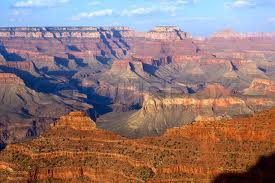|
8. Impacts of changing atmospheric circulation on Western hydroclimate Seasonal shifts in hydroclimate and 21st century warming in Western North America - unpublished manuscript - PDF Hydroclimate in Western North America (WNA) is highly seasonal, with ecological and social systems finely tuned to within year variations in moisture availability. Here, 21st century century climate model projections are used to assess seasonal changes in precipitation, evapotranspiration, and runoff in response to greenhouse gas warming across the diverse climates of WNA. Winter precipitation increases across most of WNA, but declines sharply in Mexico. During the spring, precipitation increases in the Northwest and Northern Plains and the drying in Mexico expands northward into the Southwest and California. Summer precipitation decreases over the Great Plains, the Pacific Northwest, and during July in the North American Monsoon region; this delay in the monsoon is largely compensated by increased late monsoon (September) precipitation. For most regions of WNA, these precipitation changes manifest as an amplication of precipitation seasonality (i.e., wetter wet seasons, drier dry seasons) and are forced by changes in moisture convergence due to changes in the mean flow or transient eddy activity. Even in areas where total winter precipitation (rain and snow) increases, snowfall is reduced, especially over the Montane West and Northwest Coastal regions. This shift from snow to rain, combined with increased spring-time evapotranspiration, increases runoff during the winter and decreases runoff in the spring. Notably, these large seasonal trends in precipitation and runoff over the 21st century are masked or obfuscated over much of WNA when integrated over the entire calendar year. Adaptation decisions will therefore need to account not only for declines in total water resources, but also shifts in hydroclimate within the calendar year. REFERENCES
|
 EASM2: LINKING NEAR-TERM FUTURE CHANGES IN WEATHER AND HYDROCLIMATE IN WESTERN NORTH AMERICA TO ADAPTATION FOR ECOSYSTEM AND WATER MANAGEMENT EASM2: LINKING NEAR-TERM FUTURE CHANGES IN WEATHER AND HYDROCLIMATE IN WESTERN NORTH AMERICA TO ADAPTATION FOR ECOSYSTEM AND WATER MANAGEMENT | |
| Lamont-Doherty Earth Observatory of Columbia University 61 Route 9W Palisades, NY 10964
| |
|
| |